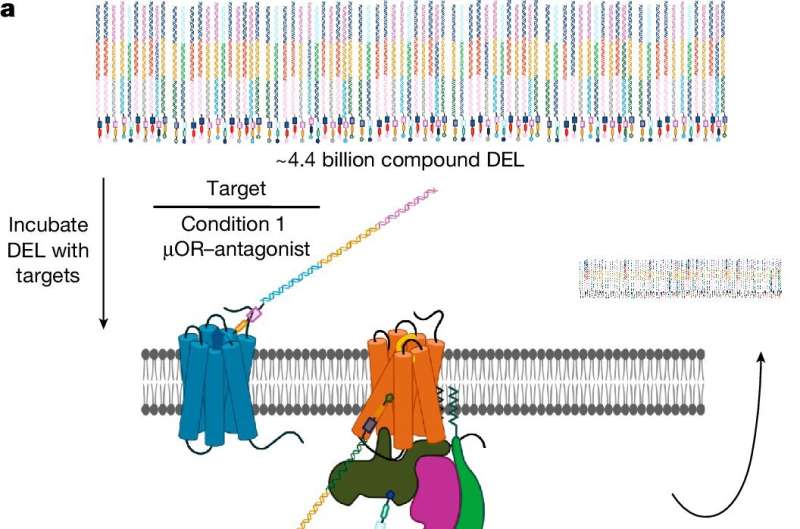This article has been reviewed according to Science X's editorial process and policies. Editors have highlighted the following attributes while ensuring the content's credibility:
fact-checked
peer-reviewed publication
trusted source
proofread
Novel compound offers improved defense against fentanyl overdoses

Scientists at the University of Florida have identified a novel compound aimed at improving the treatment of opioid overdoses, which claimed the lives of more than 81,000 Americans last year.
The discovery could combat the devastating epidemic of opioid-related deaths, driven predominantly by the proliferation of fentanyl. The highly potent synthetic opioid is a pain reliever and among the nation's most abused substances.
"Fentanyl is driving the need to find better treatments for opioid overdoses," said Jay McLaughlin, Ph.D., a professor of pharmacodynamics in the UF College of Pharmacy. "Every opioid death is preventable, highlighting the immediate need to improve the treatment options."
In a study published in the journal Nature, a team of researchers from six laboratories at Washington University School of Medicine in St. Louis, Stanford University, and UF report how they identified and tested the compound 368. When paired with the drug naloxone, compound 368 increased the medication's ability to reverse the lethal effects of opioid overdose.
Naloxone, also known by its brand name Narcan, blocks the effects of opioids and can temporarily reverse an opioid overdose. The drug acts as an antagonist—binding to opioid receptor sites on nerve cells, thereby preventing fentanyl and other opioids from activating them.
Narcan can quickly restore normal breathing in an individual whose respiration has slowed or stopped because of an opioid overdose.
"We have known for a long time that Narcan can save lives," McLaughlin said. "However, Narcan is short-acting and tends to wear off quickly. If an individual takes a massive dose of fentanyl, then they will go back into respiratory distress when the Narcan wears off."
According to McLaughlin, Narcan also triggers withdrawal symptoms in patients dependent on opioids. The research team identified that when compound 368 is combined with low doses of Narcan, it can reverse respiratory depression without inducing withdrawal symptoms.
Narcan and the compound 368 were found to bind at different sites of the opioid receptor, enabling them to complement each other in blocking opioids like fentanyl. This dual binding keeps Narcan attached to the receptor longer, providing extended protection at lower doses of the antagonist against the harmful effects of fentanyl.
"Determining the optimal Narcan dosage has been a persistent challenge for health care providers," McLaughlin said. "In time, combining a smaller amount of Narcan with our compound may circumvent the danger of patients undergoing opioid withdrawal."
The latest study builds on new insights into the structure and function of opioid receptors, advancing research published by the same team in November 2022. They previously reported in Nature how modifications to fentanyl's chemical structure maintained its pain-relieving properties while reducing harmful side effects.
More information: Evan S. O'Brien et al, A µ-opioid receptor modulator that works cooperatively with naloxone, Nature (2024). DOI: 10.1038/s41586-024-07587-7
Journal information: Nature
Provided by University of Florida



















